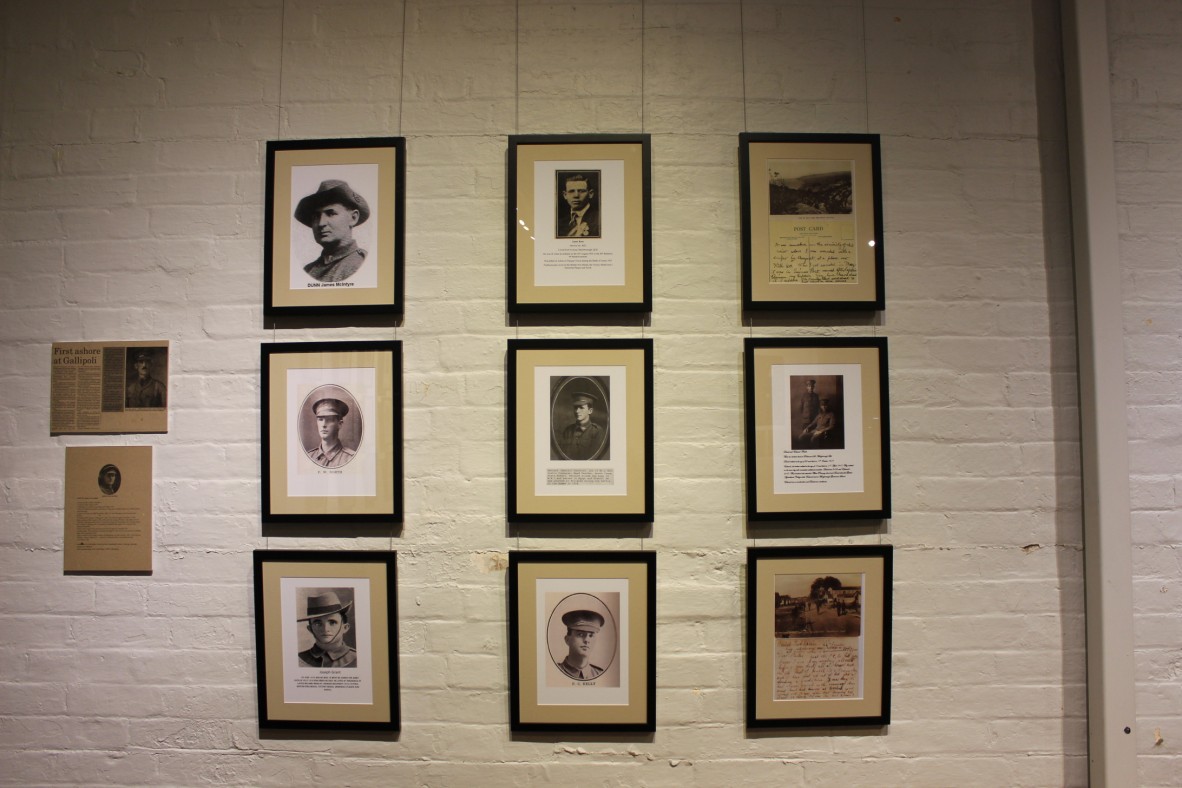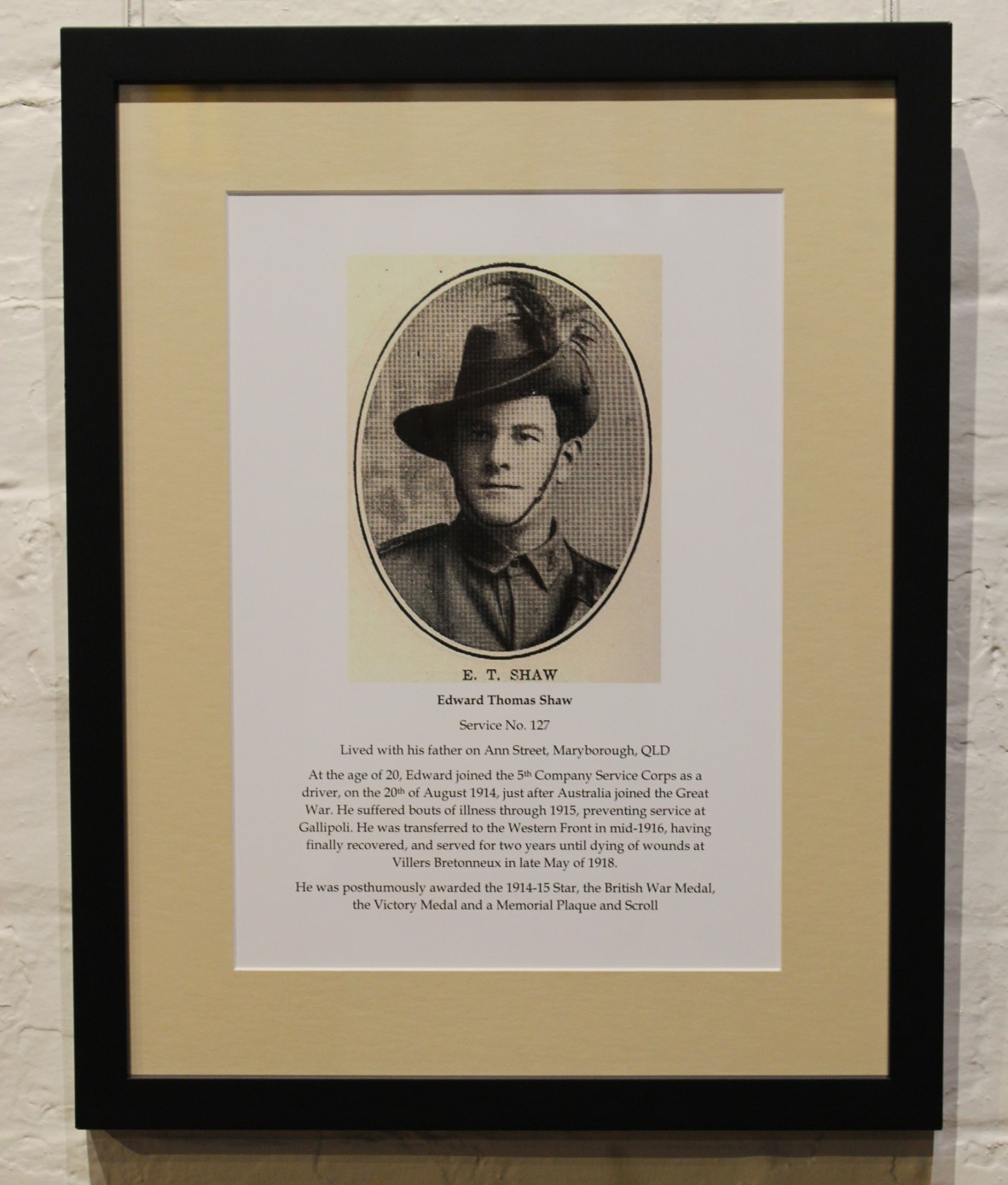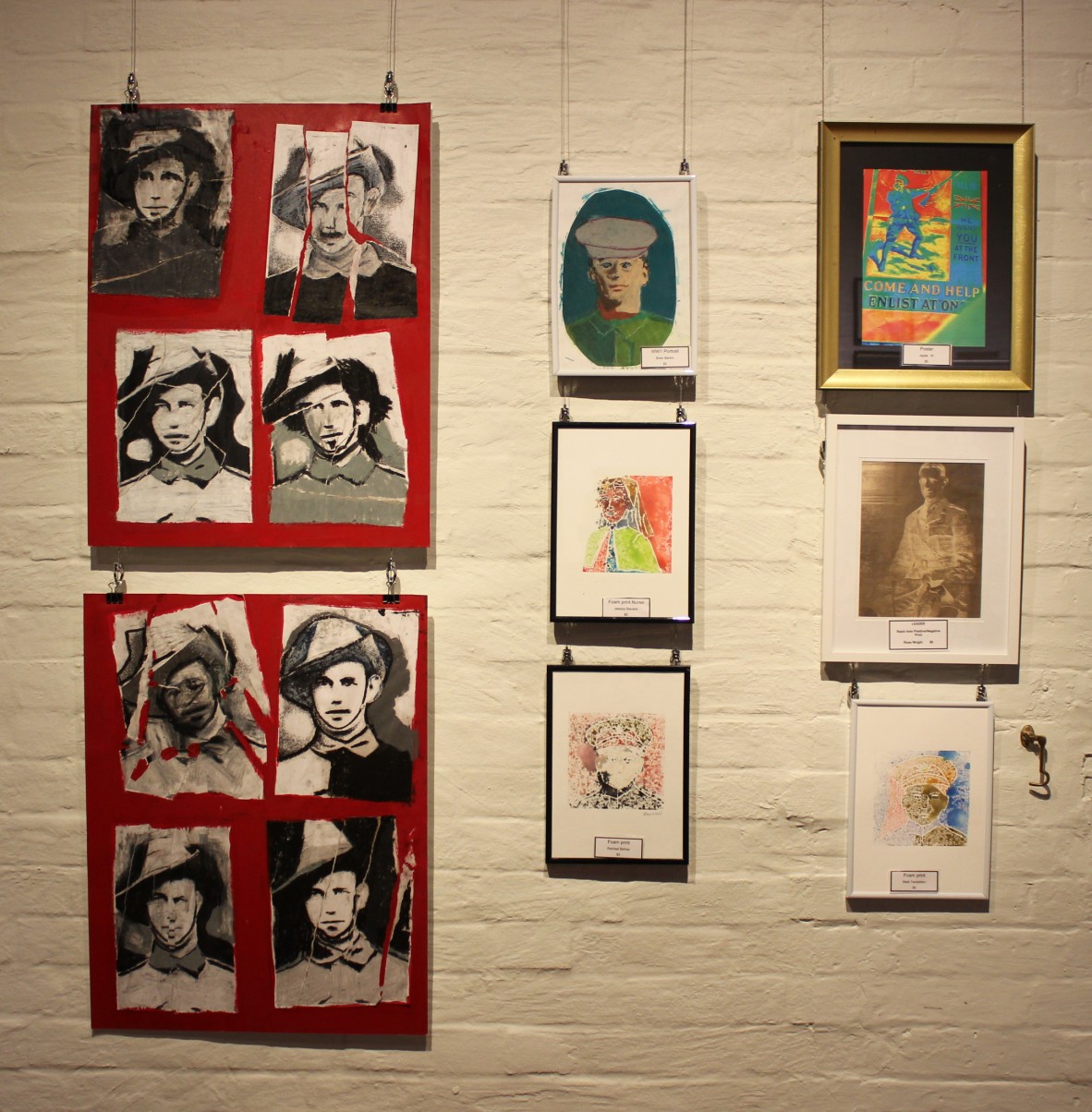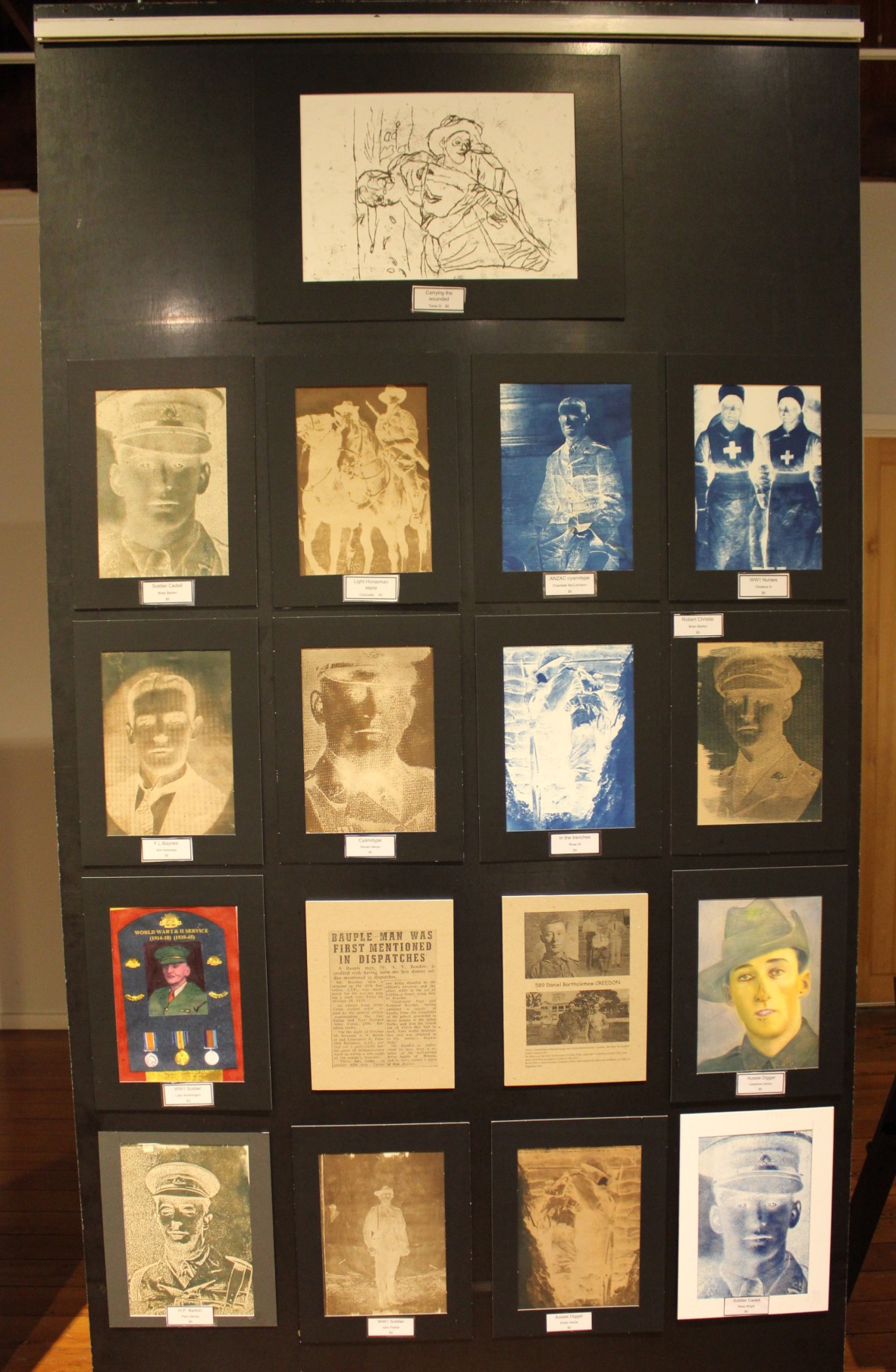
Selection of local heroes in the exhibition
Guest blogger: Rose Wright, Arts Program teacher, Maryborough Special School
After doing 1915, The Ordinary Soldier project, a second grant was applied for and received by the school to develop a photographic exhibition: Stand Proud – Lost Heroes.
It was a photographic exhibition of heroes of the First World War from Maryborough and the Fraser Coast region presented by the Maryborough Special School which included copies of soldier’s historical records, personal letters, loaned documents and a short film representing the local locations of where our heroes had lived.
How many people who served in the First World War can you name? How many still have descendants in your town? Could you find where they lived? Could you see them recognising this place you share?
Many of the stories of the ordinary men and women of the First World War are lost, as is their world. But even these ordinary persons were heroes in their own right, only this truth is hidden behind a century and within thousands of records.
Thus, emboldened by a previous grant for the commemoration of the First World War, Maryborough Special School’s Rose Wright applied to research these stories with her students. It is a struggle to fit such a project around her more usual teaching, more so with special needs students. This project was to create a photographic and visual-art exhibition, including a short documentary, to tell the stories of ordinary Australians in the First World War who came from Maryborough, Queensland. Many hours of research where spent just matching archival faces with archaic, near-identical names, and then matching those names with forgotten deeds. Attempts were made to find the very houses these people lived in, possible in a town as historic as Maryborough. With their stories— and even their faces—uncovered, this exhibition allows the lost heroes of Maryborough —posthumously— to stand proud.

Edward T. Shaw from Maryborough honoured in the exhibition
Edward Thomas Shaw from Ann Street, Maryborough is one of the soldiers depicted in this exhibition. He enlisted at the age of 20 and joined the 5th Company Service Corps as a driver on 20 August 1914, just days after the announcement of war. He suffered bouts of illness through 1915, preventing service at Gallipoli. He was transferred to the Western Front in mid-1916, having finally recovered, and served for two years until dying of wound at Villers Bretonneux in late May 1918. He was posthumously awarded the 1914-15 star, the British War Medal, the Victory Medal and a Memorial Plaque and Scroll.
Additional artworks on the First World War theme have been selected and produced by students of Visual Arts at the Maryborough Special School. This project includes direct involvement of students in five different classes at the school. Their work has curriculum links and is all original.

Selection of pastels in the exhibition
We have been working on this exhibition with 40 photographic images, documentation and text records as well as 40 student works since late June - the second school semester. Students from Senior and Transition classes assisted in the photographic image works by using computer skills. Students from Lower Senior and Middle School enjoyed creating some of the student artworks using photocopied pictures and pencils, oil pastels and monoprinted line tracings. Students from Senior and Transition created the cyanotypes and sepia toned photographs and WW1 images.

Artistic interpretation of images including cyanotypes
All of the visual artworks are by students and were sepiatypes and cyanotypes from selected images. These are light sensitive and used with chemical watercolour papers, photo plastic replications of A4 images with sunlight and glass covering for 8 minutes. Images are then washed in 4 baths of water to help the negative picture emerge with the final bath having peroxide to enhance the cyan colour. The sepia-tones are made from re-using the cyan image and placing it in a bath of baking soda for approximately 20 to 30 minutes to wash off the colour. Then the pale image is placed in highly concentrated tannin stain from a lot of tea bags steeped in a water bath. This can take about an hour to emerge as an historic looking sepia toned image. Students really enjoyed this process as it was Science and Visual Arts based.
Students were able to learn through the Arts and the project elements of the curriculum i.e. History, Communication and Technology, Science, Visual Arts, Maths concepts, Literacy and Presentation with development of visual and spatial acuity.
All images supplied.
Further information:
Video of the Opening of the Stand Proud, Lost Heroes Anzac exhibition in Maryborough, at Gataker's Art-Space launched by Rose Wright, Arts teacher for the Maryborough Special School.
One-off art exhibition of local heroes: Fraser Coast Chronicle story
Niles Elvery, Senior Project Officer, Q ANZAC 100, State Library of Queensland.
Comments
Your email address will not be published.
We welcome relevant, respectful comments.